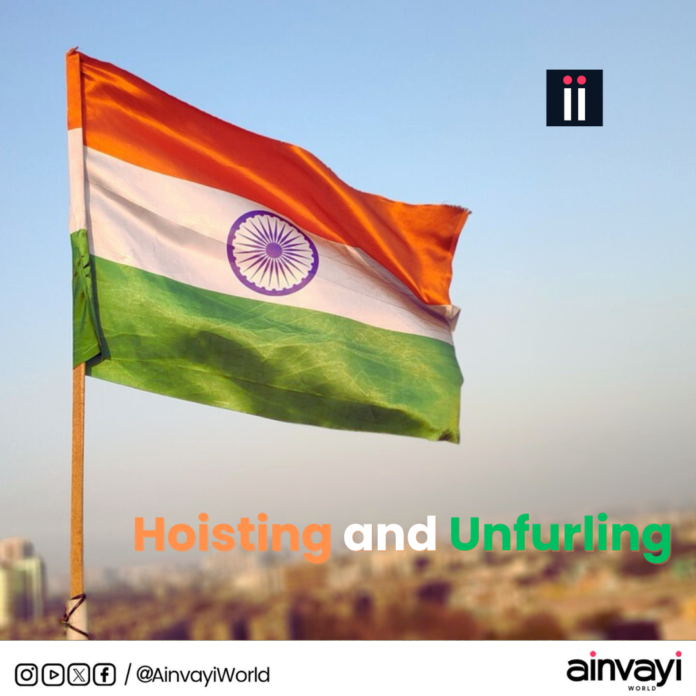In India, hoisting and unfurling the national flag are acts of considerable symbolic importance, each associated with specific ceremonial practices. The Indian Flag Code provides detailed guidelines on the correct procedures and protocols for displaying and handling the national flag with due respect.
Flag Hoisting
Flag hoisting is an essential aspect of major national and public events. On Independence Day, August 15, the Prime Minister typically performs this ceremony, symbolising the nation’s liberation from British rule in 1947. The ceremony occurs at various public and private venues, including government offices, educational institutions, and other establishments.
During hoisting, the flag is raised swiftly and securely to the top of the flagpole, ensuring it is fully visible to all. The national anthem is often played, and the occasion is marked by a strong sense of patriotic pride. It is crucial that the flag is handled with care, ensuring it does not touch the ground or any other surface.
Flag Unfurling
In contrast, flag unfurling is associated with Republic Day on January 26, commemorating the adoption of the Indian Constitution in 1950. This ceremony is traditionally performed by the President of India and is often held at Rajpath in New Delhi, accompanied by a grand parade celebrating India’s military and cultural heritage.
Unfurling involves carefully releasing the flag from its folded state and allowing it to unfold fully. This process is performed with attention to avoid any creases. The ceremony includes a formal address and the playing of the national anthem as the flag is unfurled. This act represents the nation’s embrace of its constitutional values and democratic principles.
Key Differences
The primary distinction between hoisting and unfurling lies in the ceremonial context and the flag’s position during each event:
- Hoisting: Involves raising the flag to the top of the pole, typically done on Independence Day. It represents national pride and the achievement of freedom.
- Unfurling: Involves gently spreading the flag from its folded state, associated with Republic Day. It signifies the adoption of the Constitution and the nation’s commitment to democratic values.
Both practices play a vital role in India’s national celebrations and are conducted with deep respect according to the Flag Code of India. Adhering to these guidelines ensures the flag is displayed appropriately and honours its symbolic significance. For more detailed information, the Indian Flag Code outlines comprehensive rules for the flag’s respectful display and handling.




